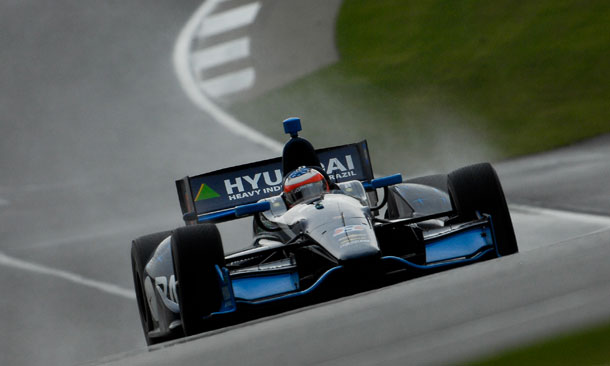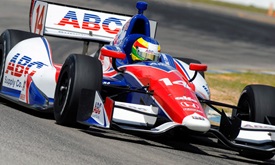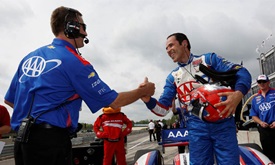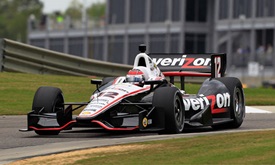'Hot spots' at Barber for the 90-lap race
MAR 31, 2012
LEEDS, Ala. – After a highly-successful season-opening race in the Honda Grand Prix of St. Petersburg, which tied the event record for most lead changes (10), the IZOD IndyCar Series hits the road for the first natural-terrain road course of the season.
The picturesque 2.38-mile, 17-turn road course is a beauty to behold for the spectator but provides plenty of challenges and “Hot Spots” for the drivers.
TRICKY FIRST TURN
After the field charges uphill to the start/finish line to take the green flag, the first turn begins a challenging series of turns that begins with a left-hander in Turn 1. But it doesn’t stop there as the field also has to hang on tight for the next two turns.
“It’s a combination of Turns 1 all the way through Turns 2 and 3,” explained Andretti Autosport driver Ryan Hunter-Reay, who finished third at St. Pete. “The pack will be bunched up on starts and restarts there and you will get a big accordion effect with a lot of two-wide running through there and it brings up the level and percentage of something bad to happen.”
TURN 5
Helio Castroneves got off the grid fast by winning the race at St. Petersburg and was the inaugural winner at Barber in 2010. The pole sitter noted the difficulty of Turn 5 – a tight downhill hairpin corner that is on the other side of the front straightaway and in clear view of the teams and pit area.
“Turn 5 is a big braking point with a good approach so it’s a great overtaking opportunity,” Castroneves said.
James Hinchcliffe of Andretti Autosport equaled his career-high finish of fourth in his first race in the Go Daddy car.
“Turn 5 is a big passing opportunity down to the hairpin,” Hinchcliffe said.
But one of his Andretti Autosport teammates also is wary of that difficult turn.
“Turn 5 is normally not a passing area unless somebody stumbles coming off the corner,” Hunter-Reay said.
Will Power believes Turn 5 is the only place on the track where a driver can pass which is why qualifications are so important on these types of tracks.
“You are carrying more speed everywhere with more grip,” Power said. “This new car has a lot of grip over the old car. Turn 5 is a pretty straight shot and the only place you actually brake at this track.”
NARROW ROAD
Because of his love for motorcycles, which includes one of the largest vintage motorcycle collections in the world, George Barber built this facility as a motorcycle road course. That makes the narrow asphalt a real challenge for the bigger IZOD IndyCar Series cars to find passing areas.
“It’s tough to pass and now with the blocking rules it’s going to be wide open,” Hunter-Reay said. “I think the passing could be quite a bit less than last year. There was a fair bit last year on starts and restarts. I would like the blocking rule to be a bit more strict and on the street circuits we need a no-blocking rule. It is a tight course but it is high speed. It’s tough to get the balance right because all of the corners are decreasing elevation. This place is really tough to pass; the tires are going to fall off a bit so you will get some differences there, as well.”
TURNS 12 AND 13
A real brave section of the race course includes a fast straight coming out of Turn 11 heading into a kink in Turn 12 and a high-speed Turn 13. That is a section in front of a grassy area filled with spectators who see quite a show in that area of the track.
“They are cool turns and you have to check out how fast we go through the corners,” Castroneves said.
According to Hinchcliffe, it’s a part of the track that separates the racers from the drivers in the series.
“I really like that 12/13 complex,” Hinchcliffe said. “It’s just that quick change of direction, blind entry, you go down and go left and pop up coming right. It’s brave, ballsy and a lot of fun. It gives us a chance to stretch the legs and use the downforce on this car.”
TURN 16
This is at the end of a long radius turn before the field makes another quick left hander into the final Turn 17. What makes Turn 16 difficult is the drivers are braking while they are turning at the same time.
“As far as getting into trouble that second to last corner in Turn 16 you are coming down there, it’s a long duration corner, decreasing radius, your tires are starting to overheat and you get guys losing the backend there,” Hinchcliffe said. “I think that is where you will have single-car incidents.”



















